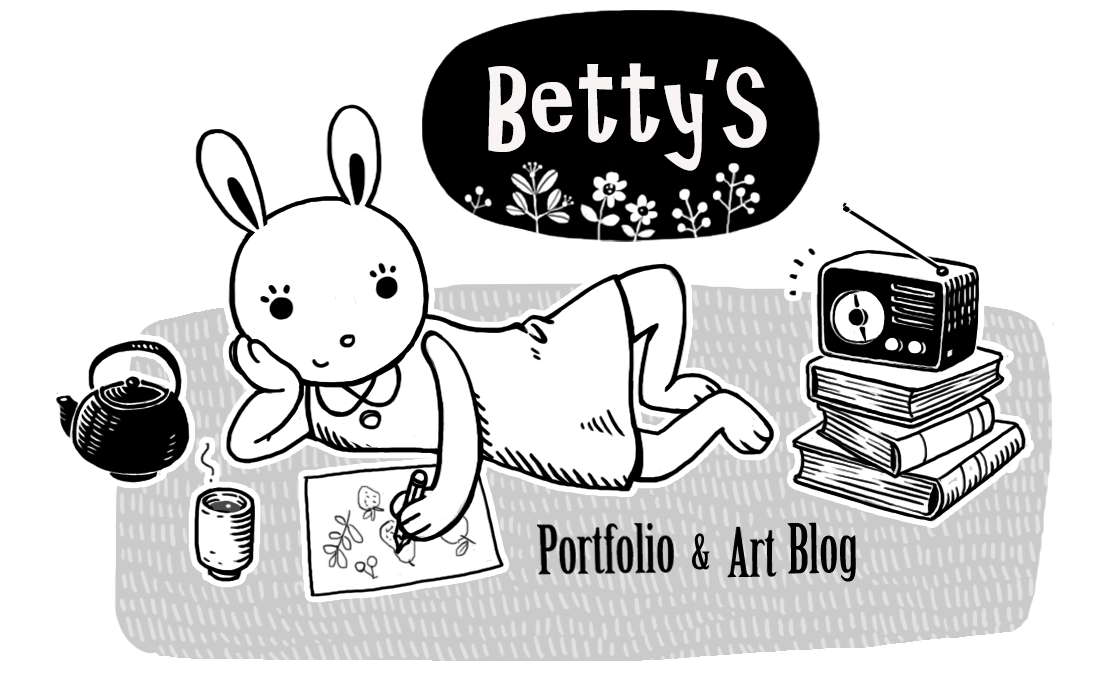I’m still alive. Still drawing. But I have to admit—I really should update my blog more often.
It’s not that I have nothing to say; in fact, it’s quite the opposite. With everything happening in the world, I often find myself overwhelmed with thoughts, but I struggle to express them without sound grumpy. Most of the time, I write and rewrite a thousand words, only to decide not to post them. The internet already has enough negativity, and I’d rather contribute something more positive.
Today, while browsing Pinterest, I was surprised to see one of my own drawings pinned there. ( see image below the comments screenshot ) Pinterest has always been a great source of inspiration for me (though lately, it's been increasingly flooded with AI generated art, which is frustrating). To my surprise, there were comments under my artwork—Some accused me of copying another artist’s style and claiming it as my own, while others defended me. Here’s a screenshot, though I’ve removed everyone’s IDs.
First and foremost, I’m genuinely happy that people are engaging with my work at all. I don’t update often, but I read every comment, and they mean a lot to me. However, being accused of copying isn’t fair. If those critics had simply clicked on the link, they would have seen that the drawing originated from this post, where I clearly stated that it was a study of Ivan Bilibin’s style. Unfortunately, content on the internet often loses its original context when shared as isolated snapshots. I tried to reply directly on Pinterest, but for some reason, my comment wouldn’t post. So, I’m writing my response here instead:
Dear Internet,
It’s always interesting to see discussions about the ethics of "copying an art style," especially when it comes to my own work. I appreciate the conversation, and I’d like to clarify a few things.
First, I want to address the “copy” concern—I did, in fact, credit Ivan Bilibin in my art blog. The purpose of this particular drawing was to study his style, to understand how and why he made certain artistic choices. However, Bilibin is not my only influence in this piece, many other artists have inspired me as well. I took inspirations from Celtic bible book illustration, Edmund Dulac’s water colour painting and many more.
I also have to agree with other’s comment—this is how artists learn and develop their own styles. Since I never claimed to have invented this unique approach, as that would be absurd. No artist creates in a vacuum; we all learn by studying others. When I was younger, I was amazed by how distinct certain artists’ styles seemed. But after drawing for over 20 years, I now recognize different stylistic influences in every piece of art I see, some are subtle some obvious. This understanding comes with experience, and it’s a natural and accepted part of artistic growth. However this does not make the artwork a “copy”.
Think of it like music—you can compose your own jazz piece, but that doesn’t mean you’re "copying" jazz itself. You’re working within a tradition, following its principles while bringing in your own voice. The same applies to visual art. Even Ivan Bilibin developed his signature style by studying medieval Russian folk art.
Critique like this does feels a bit harsh to me, but I truly appreciate you sharing your thoughts. If you're interested, you're welcome to visit my website to see how my style has evolved over the years. The study of Bilibin’s work has played a role in my growth, but it has ultimately helped me develop something uniquely my own - for now - It will keep involve in the future I’m quite sure.
If you'd like, I’d be happy to share a list of artists who have inspired me! Inspiration is a beautiful, endless cycle, and I believe it’s something to be celebrated. Thanks again for engaging in this discussion!
Lastly, this whole event has made me consider compiling a list of the artists who have constantly inspired me. It would be interesting to reflect on how far I’ve come and how none of us create in isolation.
Edward Hopper
Shaun Tan
Jon McNaught
René Magritte
Yoshitomo Nara
These are my major inspirational artists. I consider them my teachers—not only in drawing but also in how to think, feel, and express emotions when words are not enough. They have taught me what it means to live and work as an artist.
Michael Sowa
Jean Giraud
Masaru Fujimoto
Yoshiyuki Sadamoto
Hisanori Yoshida
Tin Can Forest
Mike Mignola
Chun Eunsil
These artists have primarily influenced my drawing style. I have studied their techniques closely, learning everything from rendering light and shadow to the smallest details. Of course, all the unknown folk artists from around the world, along with Mother Nature, are my endless sources of inspiration.






